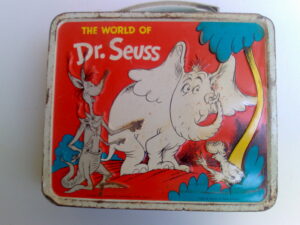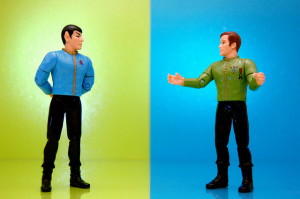The New York Times recently published an article about the upcoming auction of ‘Buying Myself Back: A Model for Redistribution’, a nonfungible token (NFT) to be auctioned by Christie’s on May 14.

Buyers purchasing an NFT become owners of a digital good, which can be an image, as is A Model for Redistribution, a video, or even a music album, all sold in the form of a unique blockchain digital token.
Such tokens are non-fungible, meaning they are unique and cannot be exchanged for their equivalent. Interestingly, works which were not originally digital, such as this photograph of Keith Haring, may be made an NFT, thus reaching new markets and increasing their value, as NFT technology makes a work verifiably unique. Scarcity enhances values and then artists, or content owners may benefit.
This new technology is not confined to the art world. The NBA introduced its Top Shot marketplace where fans can buy NFT videos of their favorite players, thus buying a licensed video, just as, not a long time ago it seems, fans collected trading cards of their favorite players. A paper trading card featuring Lebron James recently sold for $5.2 million, setting a record. NBA NFT, while not (yet) as pricey, are not cheap either. It remains to be seen, however, if the market will remain strong allowing for NFT high prices to hold.
The NFT market is new and evolving: Everydays: The First 5000 Days, a NFT digital collage created by Beeple, was sold last March by Christie’s for 69,346,250 US dollars. However, some NFTs can be purchased for a reasonable price. The buyer must, however, have a bitcoin wallet to pay for the purchase. Even Christie’s accepted to be paid in bitcoins for the sale of Everydays: The First 5000 Days.
Blockchain technology also ensures the authenticity of the work and records its provenance. Art historians compiling catalogues raisonnés of NFT artists will be able to rely on blockchain technology to establish the provenance of the work. A NFT may be copied easily, as it is a digital work, but the original work will be the only one with a blockchain, thus authenticating ownership and provenance.
Christie’s explains that the token “reinstates Ratajkowski’s agency over her own image by allowing her access to its monetary and symbolic value, both of which she and other women in similar professions have too often been deprived.”
The Buying Myself Back: A Model for Redistribution NFT has an interesting story. It features a photograph of fashion model Emily Ratajkowski in front of a work by Prince’s featuring her, which was part of the New Portraits exhibition at the Gagosian Gallery in 2014. Prince reproduced Instagram posts on canvas, after adding a comment or two under the post using his own Instagram account. This method of creating a piece of art did not fare well with one of the original artists (see here).
The title of the work sold by Ms. Ratajkowski alludes to an essay she wrote, Buying Myself Back, published last September by New York Magazine and was widely shared, where she describes how she came into possession of the Prince work, including having to buy it back from a former boyfriend. She also described a 2012 photo session where she posed nude, after which some polaroids taken at the session became part of a book published without her permission.
Ms. Ratajkowski wrote the essay after being sued for copyright infringement in October 2019 by photographer Robert O’Neil after the model had posted on her Instagram account a photograph O’Neil had taken of her in the streets of New York. Her image, his copyright (allegedly at least, the case is ongoing).
Announcing the sale of Buying Myself Back: A Model for Redistribution on her Instagram account, Ms. Ratajkowski wrote:”
“The digital terrain should be a place where women can share their likeness as they choose, controlling the usage of their image and receiving whatever potential capital attached. Instead, the internet has more frequently served as a space where others exploit and distribute images of women’s bodies without their consent and for another’s profit.”
She explained further in a Twitter post that
“using the newly introduced medium of NFTs, [she] hoped to symbolically set a precedent for women and ownership online, one that allows for women to have ongoing authority over their image and to receive rightful compensation for its usage and distribution.”
Christie’s describes the work as a “conceptual work.” Considering this statement from a copyright point of view, we ask : is the work protected by copyright?
Starting with basic concepts of copyright law, only works fixed in a “tangible medium of expression… sufficiently permanent or stable to permit it to be perceived, reproduced, or otherwise communicated for a period of more than transitory duration” are protected by copyright.
As such, a NFT can be protected by copyright, because it is fixed in tangible medium of expression and can be communicated for more than a transitory period of time, even though Christie’s “lot essay” explains that Ms. Ratajkowski “employ[s] the NFT as a tradeable metaphor for that which has no physical embodiment.”
A work must also be original to be protected. It is probably original enough to be protected, especially considering that it is original to have the model of a painting pose in front of it.
The work is a derivative work of the original Prince’s work, which itself reproduced a photo which copyright he did not own. As Prince claims fair use, the copyright owner of Buying Myself Back: A Model for Redistribution, in the unlikely event h/she would be sued by Prince, could also claim fair use.
What about copyright’s ownership? The original owner is likely to be the person who took the photograph, but Ms. Ratajkowski may have acquired the right.
As a note, merely creating an NFT from an original work is unlikely to be considered derivative work protected by fair use. A NFT Jean-Michel Basquiat’s drawing was recently withdrawn from sale because the seller did not own its copyright nor a copyright license. Similarly with the recent sale of a Bansky NFT, the buyer would have been given the right to destroy the sale, a move which would not have violated the Visual Artists Rights Act of 1990 as it protects certain works of art only during the lifetime of the artist (this contrasts greatly with, say, French law, which recognizes that moral rights are perpetual…).

 Photographer Donald Graham filed a copyright infringement suit against Prince in 2016 (see
Photographer Donald Graham filed a copyright infringement suit against Prince in 2016 (see  I am writing here only about the two motions and will comment on yesterday’s ruling later on.
I am writing here only about the two motions and will comment on yesterday’s ruling later on.









